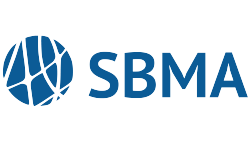The Employee Retention Tax Credit was rolled out as part of the CARES (Coronavirus Aid, Relief, and Economic Security) Act. It was enacted to encourage employers to retain employees throughout the Coronavirus pandemic. As our country begins to understand the full scope of COVID-19, this credit could allow employers to keep employees on their payroll and keep their doors open.
What is the Employee Retention Tax Credit?
The tax credit is a refundable tax credit that is meant to incentivize employers to keep employees on their payroll. For all businesses working to keep their staff on the payroll, 50% of qualified wages must be paid to the employees from March 12, 2020, to January 1, 2021. This includes credit for qualified health plan expenses.
An employer can claim up to $10,000 in wages paid if the employer’s business is completely or partially suspended because of Coronavirus and if their gross receipts also decrease by more than 50%.
What makes someone eligible for the Employee Retention Tax Credit?
The ERTC is available all employers including tax-exempt organizations. The only organizations that are not eligible for the ERTC are state and local governments and their instrumentalities and any small business that has taken a Small Business Loan. Those who are self-employed are also not eligible for the ERTC.
In order to qualify for the tax credit, an employer must be a business that has been fully or partially suspended by the coronavirus government orders. If they do not meet that requirement, they may also qualify is the employer has gross receipts below 50% of the same quarter in 2019. If the employer’s gross receipts go beyond 80% they are no longer eligible for the tax credit after the quarter ends.
Employers with fewer than 100 employees may receive a tax credit for all employees. Those with more than 100 employees can receive credit for the employees who are being paid but are not working due to coronavirus cutbacks.
Eligibility Criteria:
To qualify for the ERC, businesses and tax-exempt organizations must meet specific eligibility criteria. Generally, eligible employers are those that:
- Were shut down by a government order due to the COVID-19 pandemic during 2020 or the first three calendar quarters of 2021.
- Experienced a significant decline in gross receipts during the eligibility periods in 2020 or the first three calendar quarters of 2021.
- Qualified as a recovery startup business for the third or fourth quarters of 2021.
Additionally, eligible employers must have paid qualified wages to claim the credit.
How can I claim the Employee Retention Tax Credit?
The ERTC cannot be combined with any other tax credit. If you are counting wages toward the Families First Coronavirus Relief Act tax credit, you cannot count those same wages toward the ERTC.
To begin your ERTC claim, employers should report their total qualified wages and other credits on a quarterly basis. Form 941 allows businesses to report their income, along with their Social Security and Medicare taxes withheld from employee’s paychecks.
If an employer reduces the amount of payroll taxes they withhold from employee’s wages, they can be immediately reimbursed.
As businesses continue to adjust their business plans in the face of coronavirus, there are many ways they can find relief through various programs. The ERTC is a good option for employers who are trying to keep their employees on their payroll. Visit our COVID-19 resource page for more information on programs that can benefit your business.
Penalty Relief:
Employers who may have made errors in claiming the ERC can find relief through penalty relief provisions. Understanding the specific circumstances under which penalty relief applies can help businesses rectify any inadvertent mistakes without facing unnecessary penalties.
Reporting Tax-Related Illegal Activities:
The IRS encourages individuals to report tax-related illegal activities, including erroneous ERC claims, promotion of incorrect information, and abusive tax schemes. Reporting such activities ensures the integrity of the ERC program and helps safeguard taxpayers from potential fraud and abuse.
Beware of ERC Scams:
Despite the benefits of the ERC, businesses should remain vigilant against potential scams and fraudulent schemes. Aggressive marketing tactics, unsolicited offers, and promises of quick refunds should raise red flags. It’s essential to verify the legitimacy of any claims or offers related to the ERC and seek guidance from reputable sources.
Final Notes
The Employee Retention Credit has provided much-needed relief to businesses and tax-exempt organizations affected by the COVID-19 pandemic. By understanding the eligibility criteria, claiming procedures, and compliance requirements, eligible entities can leverage the ERC to mitigate financial challenges and support their workforce. However, caution is advised to avoid falling victim to scams or erroneous claims. For accurate information and assistance with ERC-related matters, consulting with a qualified tax professional is recommended.
For further information and resources regarding the ERC, including eligibility checklists, FAQs, and reporting mechanisms for tax-related illegal activities, visit the official IRS website.


